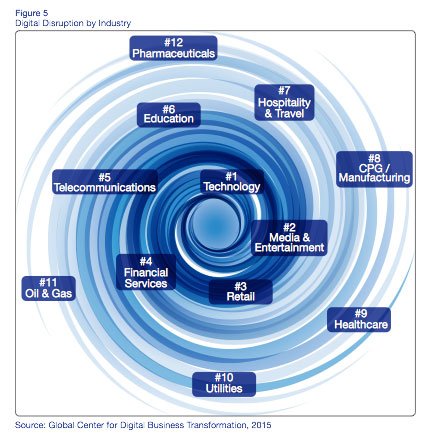
70% to 80% of consumers open most of their mail.
For businesses and tech entrepreneurs who are struggling to evaluate the evolving face of advertising media, it should be easy to “like” old school direct mail after reviewing the latest industry statistics.
The recently released 2015 Essential Guide to Direct Mail Marketing has a simple message: Direct mail delivers.
Let me add that direct mail has always delivered and, because it is proven to support new media channels, it will deliver for some time to come.
Ginger Conlon, Editor-in-Chief at Direct Marketing News, makes the case by noting that the response rate to direct mail catalogs to a house list is 4.26%, while the email response rate is just .12%. While your results are clearly going to vary by the type of mailing (product offer, newsletter, event invitation, catalog, etc.) and the demographics of your target audience, this statistic is a powerful one.
Conlon points to a study by Cohber which shows that 70% of U.S. consumers believe that direct mail is more personal than email. This is a key reason for the superior response rate, but clearly there is more.
Here are some observations you might confirm by looking in your own mailbox:
1. Thanks to big data and experienced marketers who understand how to use the medium, chances are the mail delivered to your box is relevant to you. The current cost of postage has also helped to improved the aim of marketers by making the “buck shot approach” to direct mail marketing difficult to sustain.
2. Less mail volume equals less competition. The well documented decline of mail volume is a good thing for direct mail marketers. There is now less competition for a share of your mailbox.
3. Tech companies are using direct mail. Some of the most forward thinking companies are using old school direct mail to market. Square, the company that turns your mobile device into a payment processing tool, recently sent a nicely designed self-mailing piece that clearly presented the company’s benefits and provided a phone number and website for sign ups.

4. Direct mail gets seen and opened. According to the Direct Marketing Association’s 2014 Statistical Fact Book, 70% to 80% of consumers open most of their mail. This is a statistic worth comparing to your other media options.
To learn more about this powerful old school medium visit dmnews.com. You might like what you find and end up improving your marketing plan.
How Soon Will Your Business Be Digitally Disrupted?
in Business Success, marketing/by David WrenAccording to an eye-opening survey from the Global Center For Digital Business Transformation (DBT Center), executives believe an average of four of today’s top 10 incumbents in each industry will be displaced by digital disruption in the next five years.
The DBT Center report titled “Digital Vortex – How Digital Disruption Is Redefining Industries” is both easy to understand and remarkable.
In addition to discovering when your industry is most likely to move to the center of the disruption vortex, here are some surprising findings that got my attention:
These finding perhaps underscore the lack of general understanding of the dynamics at work.
The report points out that the difference between digital disruption and traditional competitive dynamics comes down to two main factors: the velocity of change and the high stakes involved. Digital disruptors innovate rapidly, and then use their innovations to gain market share and scale far faster than challengers still clinging to predominantly physical business models.
As a marketer, I’ve had my “seatbelt” on for some time as my industry is being disrupted at an incredible rate and sits near the center of the digital vortex. Unprecedented amounts of data are available these days that are driving innovation in both advertising technologies (Ad Tech), which among other things helps us target ads, and marketing technology (Mar Tech), which provides tools for managing marketing campaigns, customer data, business leads and more. At the end of the day, they both drives sales.
Along with Ad Tech and Mar Tech, my world also revolves around uncovering the aspirations of target markets (what prospects hope for, want to achieve, desire, and more) and aligning them with the benefits of products and services. It’s creating “the message” for these prospects with words and images that is perhaps the least technical part of today’s disrupted marketing industry, but certainly tools are being developed to aid the creative process as well. I hope you enjoy the report! (Download)
Curing Your Social Media Envy
in Social Media/by David Wren1 — Understand clearly who is on each social media platform and research what experts and thought leaders have to say about who might be joining in the future. Do these platform users match your customer demographics? Here are the demographics of the major platforms from Pew Research Center to get you started.
2 — Research how each platform is currently being used by advertisers. Large companies with plenty of marketing resources (read money) are likely to be the first to test and adopt new media. What they do is helpful in assessing the potential marketing value for your company.
3 — Look for your competitors. If you don’t see competitors or companies like yours, you should not necessarily be detoured. If the above considerations appear promising, you could be looking at a great opportunity. If you do find competitors, it’s equally important to see if you can understand their strategies. Note that because advertising on many of these platforms can be bought by location, you may not see others who are in your industry because they are not in your market.
4- Determine how you will measure the results of your social media investments. This can be easy or complex. The sales department of the medium is likely to have case studies, guidelines and tools for measuring results. In addition, you are very likely to find plenty of analysis from bloggers and others who specialize in social media marketing who have published success and failure stories.
5- Make sure you understand the resources needed to effectively utilize a promising social media platform. In many cases, your website will need to be set up to capture visitors so they can be retargeted. Retargeting marks or tags online users who visit your website with a pixel or a cookie. Some social media platforms can utilize this data to serve up your ads and more to users. You may also need to commit time and resources to produce social media content. These are important considerations that will keep you from wasting time pursuing social media marketing opportunities without the adequate infrastructure to make the investment worthwhile.
Social media is moving fast as platforms are constantly evolving and, in fact, being disrupted by new platforms. For example, Twitter recently launched a streaming video app called Periscope that offers you the ability to tweet a live streaming broadcast. Perhaps you’ll be streaming your company’s product launches, events and more on Twitter in the near future. Once you’ve established some core social media marketing knowledge, following a good independent news source like TechCrunch and blogs like Medium are good ways to stay current.
Why New School Marketers Should “Like” Old School Direct Mail
in Direct Mail/by David Wren70% to 80% of consumers open most of their mail.
For businesses and tech entrepreneurs who are struggling to evaluate the evolving face of advertising media, it should be easy to “like” old school direct mail after reviewing the latest industry statistics.
The recently released 2015 Essential Guide to Direct Mail Marketing has a simple message: Direct mail delivers.
Let me add that direct mail has always delivered and, because it is proven to support new media channels, it will deliver for some time to come.
Ginger Conlon, Editor-in-Chief at Direct Marketing News, makes the case by noting that the response rate to direct mail catalogs to a house list is 4.26%, while the email response rate is just .12%. While your results are clearly going to vary by the type of mailing (product offer, newsletter, event invitation, catalog, etc.) and the demographics of your target audience, this statistic is a powerful one.
Conlon points to a study by Cohber which shows that 70% of U.S. consumers believe that direct mail is more personal than email. This is a key reason for the superior response rate, but clearly there is more.
Here are some observations you might confirm by looking in your own mailbox:
1. Thanks to big data and experienced marketers who understand how to use the medium, chances are the mail delivered to your box is relevant to you. The current cost of postage has also helped to improved the aim of marketers by making the “buck shot approach” to direct mail marketing difficult to sustain.
2. Less mail volume equals less competition. The well documented decline of mail volume is a good thing for direct mail marketers. There is now less competition for a share of your mailbox.
3. Tech companies are using direct mail. Some of the most forward thinking companies are using old school direct mail to market. Square, the company that turns your mobile device into a payment processing tool, recently sent a nicely designed self-mailing piece that clearly presented the company’s benefits and provided a phone number and website for sign ups.
4. Direct mail gets seen and opened. According to the Direct Marketing Association’s 2014 Statistical Fact Book, 70% to 80% of consumers open most of their mail. This is a statistic worth comparing to your other media options.
To learn more about this powerful old school medium visit dmnews.com. You might like what you find and end up improving your marketing plan.